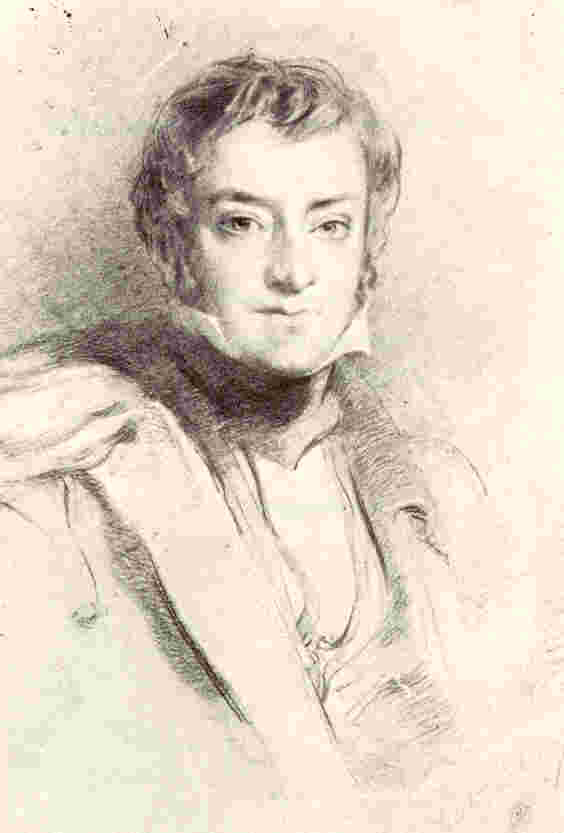
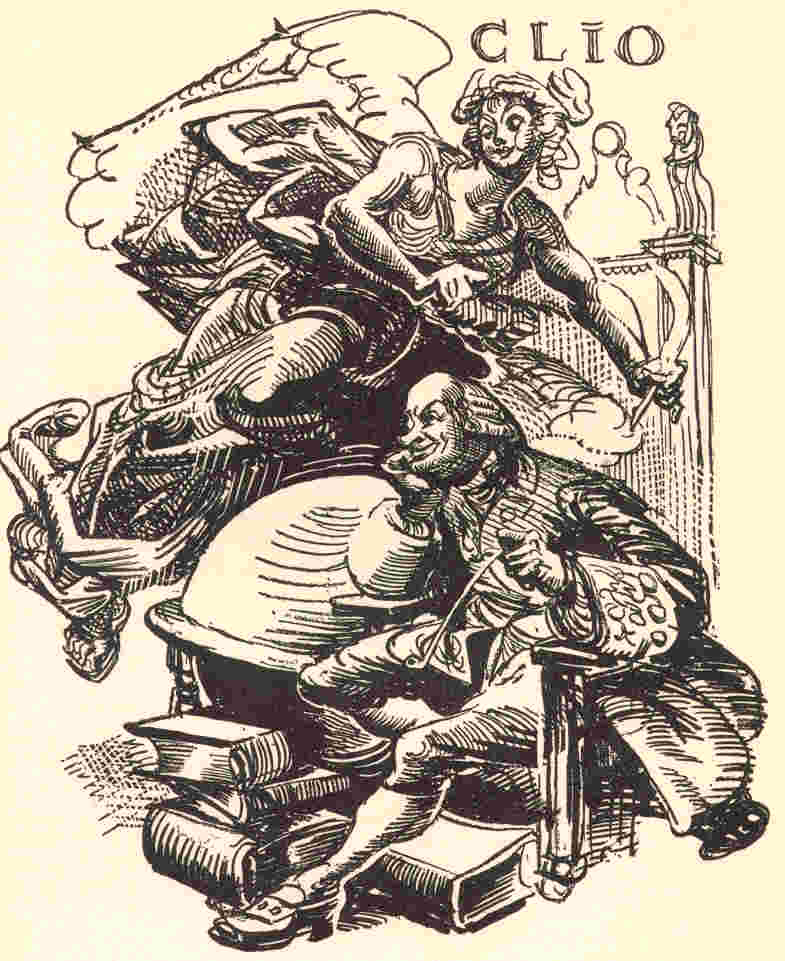
 |
 |
Washington Irving (1783-1859) has often been called "the Father of American Literature." He is thought of, for instance, as the first American writer to make his living primarily through his creative work, and he is the first American acclaimed by the English literary establishment as worthy of recognition. In effect, Irving was seen as our literary declarer of Independence.
"The Father of American Literature" is a curious label for Irving, for he was not all that at "home" with American life. His very early literary efforts -- The Letters of Jonathan Oldstyle, Gent. (1802) and Salmagundi (1807) -- are comic glances and satirical thrusts at contemporary New York society. And almost everybody realizes once they think about it a bit that the "children's story" that is his best known work, "Rip Van Winkle" (1819), really bemoans the fact that the Revolution marked the drastic change in America from bucolic paradise to commercial and political Babel. The birth of America in that story is described as a Fall, and, in fact, Irving seemed more at home in the Old World and spent much of his life there. American democracy was no unalloyed advance in civilization. It was mobocracy, and Rip was its victim, an unwilling "drop out." In our beginning, Irving looked back not forward.
A History of New York (1809), which was Irving's first major work and which was an immediate and continuing success through several dozen editions in his life time, is definitely not history but gentle satire. It purports to be a history of the three governors (there were actually seven) during the brief fifty-year Dutch reign over New York in the early 1600s: Walter van Twiller (Walter the Doubter), William Kieft (William the Testy), and Peter Stuyvesant (Peter the Headstrong). Though Irving did considerable research about the Dutch period, there was little factual information about these men, and the figures in his work are almost totally his own fabrications.
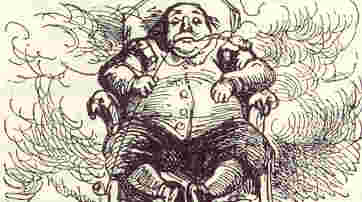
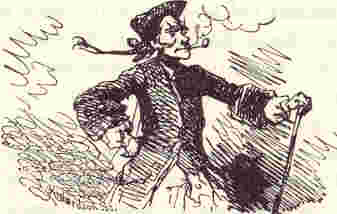
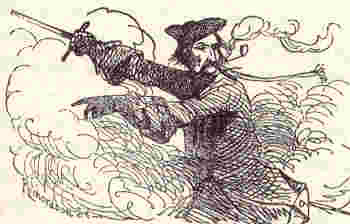
Moreover, Irving was writing about his present as much as about his past. Twiller, for instance, depicts Marinus Willet, mayor of New York in 1807, and Kieft was widely assumed to be a caricature of Thomas Jefferson.
Irving, then, mocks history which was especially important in the post-revolutionary period of his youth as the vehicle for establishing America's success story. Writers of history were doing their part to create the imagined community of America. Irving's history, however, deflates such work, and its deconstruction is surprisingly modern. Irving's history is a "conservative challenge to the emergent national consensus. Instead of glorifying national progress, Irving relates a tale of declension in which America, symbolized by the fictional New Amsterdam, begins as 'a second Eden' and then succumbs to the forces of democracy and materialism represented by the Yankees" (Gilmore 666).
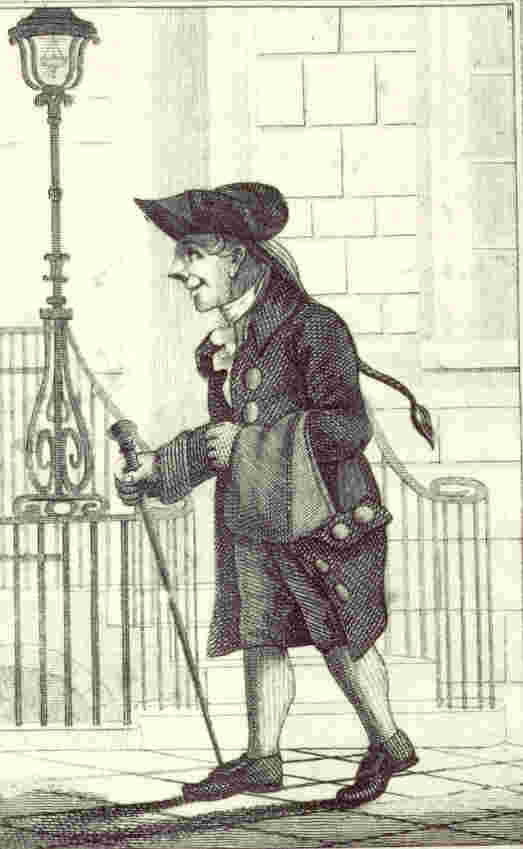 The
fiction of Irving's history is that it was written by a Diedrich Knickerbocker
(Irving often used personae, the most famous being Geoffrey Crayon of The
Sketch Book), a kindly but eccentric old Dutchman, who rented a room
in a boarding house, and worked incessantly and crotchetily on his opus
behind closed doors to the bemusement of his fellow occupants. When
Knickerbocker disappeared, his room was searched, the manuscript found
in a trunk and published by the landlord to defray the debt of unpaid rent.
The history is composed of seven books, and the New York part itself does
not begin till Book Two. Book One, which contains the "gigantic question"
that concerns us here, moves from the creation of the world through the
discovery of America up to the discovery of New York.
The
fiction of Irving's history is that it was written by a Diedrich Knickerbocker
(Irving often used personae, the most famous being Geoffrey Crayon of The
Sketch Book), a kindly but eccentric old Dutchman, who rented a room
in a boarding house, and worked incessantly and crotchetily on his opus
behind closed doors to the bemusement of his fellow occupants. When
Knickerbocker disappeared, his room was searched, the manuscript found
in a trunk and published by the landlord to defray the debt of unpaid rent.
The history is composed of seven books, and the New York part itself does
not begin till Book Two. Book One, which contains the "gigantic question"
that concerns us here, moves from the creation of the world through the
discovery of America up to the discovery of New York.
Book One does not receive much critical attention.
It is usually seen simply as a burlesque of history writing itself, for
Irving quotes numerous authorities for such points as the origins of the
Indians only to debunk their "authority." This is in many ways an extremely crucial point, though,
and deserves more attention. Irving, again surprisingly modern, shows
that history is constructed, is but a fable agreed upon, and, perhaps more
to the point, reflects "the viewpoint of the winners" (Gilmore
666). The satire in chapters one to four is more clearly general
than that in our Book I, Chapter V, however, where the matter all of a
sudden is deadly serious and the tone more severe when the "gigantic question"
is introduced. Chapter V is a significant set piece, then, and can
be taken successfully out of context as we have done, both as an example
of Irving's purpose and as a prick to our own consciences.
"authority." This is in many ways an extremely crucial point, though,
and deserves more attention. Irving, again surprisingly modern, shows
that history is constructed, is but a fable agreed upon, and, perhaps more
to the point, reflects "the viewpoint of the winners" (Gilmore
666). The satire in chapters one to four is more clearly general
than that in our Book I, Chapter V, however, where the matter all of a
sudden is deadly serious and the tone more severe when the "gigantic question"
is introduced. Chapter V is a significant set piece, then, and can
be taken successfully out of context as we have done, both as an example
of Irving's purpose and as a prick to our own consciences.
Irving declares that the ultimate justification for "our" ownership of "America" is power, pure and simple. As Martin Roth indicates, Irving's purpose in this early section is to "annihilate the history of America" and to deny and destroy the legitimacy of our origin and title to the land (115). That is a powerful thing to do, or to try to do. In regard to our perennial Indian problem, Irving "stands outside the national orthodoxy that sanctioned the massive Indian removals of the nineteenth century in the name of progress" (Gilmore 666). He is unabashedly skeptical of the quality of "civilization" that the Old World has bred in the New.
Irving, then, has often been relegated to the shelf reserved for distant ancestors to whom only ceremonial respect is now due. But the "gigantic question" he asks in Book I, Chapter V of the History of New York is perennially provocative as every generation grapples with the question of what it means to be an American.
Home | Background | Original | Transcription | Notes | Revisions | Analyses